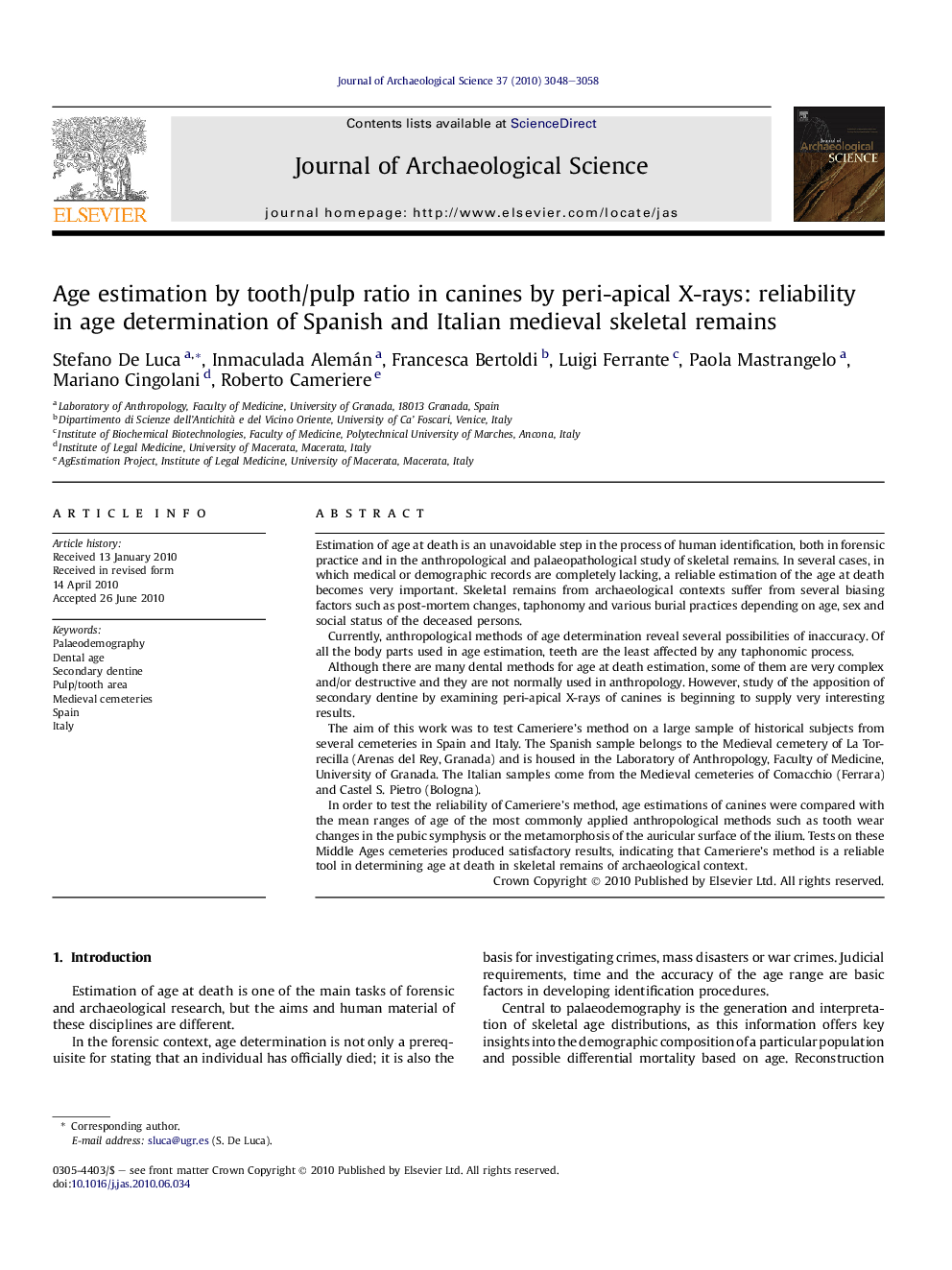| Article ID | Journal | Published Year | Pages | File Type |
|---|---|---|---|---|
| 1036588 | Journal of Archaeological Science | 2010 | 11 Pages |
Estimation of age at death is an unavoidable step in the process of human identification, both in forensic practice and in the anthropological and palaeopathological study of skeletal remains. In several cases, in which medical or demographic records are completely lacking, a reliable estimation of the age at death becomes very important. Skeletal remains from archaeological contexts suffer from several biasing factors such as post-mortem changes, taphonomy and various burial practices depending on age, sex and social status of the deceased persons.Currently, anthropological methods of age determination reveal several possibilities of inaccuracy. Of all the body parts used in age estimation, teeth are the least affected by any taphonomic process.Although there are many dental methods for age at death estimation, some of them are very complex and/or destructive and they are not normally used in anthropology. However, study of the apposition of secondary dentine by examining peri-apical X-rays of canines is beginning to supply very interesting results.The aim of this work was to test Cameriere’s method on a large sample of historical subjects from several cemeteries in Spain and Italy. The Spanish sample belongs to the Medieval cemetery of La Torrecilla (Arenas del Rey, Granada) and is housed in the Laboratory of Anthropology, Faculty of Medicine, University of Granada. The Italian samples come from the Medieval cemeteries of Comacchio (Ferrara) and Castel S. Pietro (Bologna).In order to test the reliability of Cameriere’s method, age estimations of canines were compared with the mean ranges of age of the most commonly applied anthropological methods such as tooth wear changes in the pubic symphysis or the metamorphosis of the auricular surface of the ilium. Tests on these Middle Ages cemeteries produced satisfactory results, indicating that Cameriere’s method is a reliable tool in determining age at death in skeletal remains of archaeological context.
